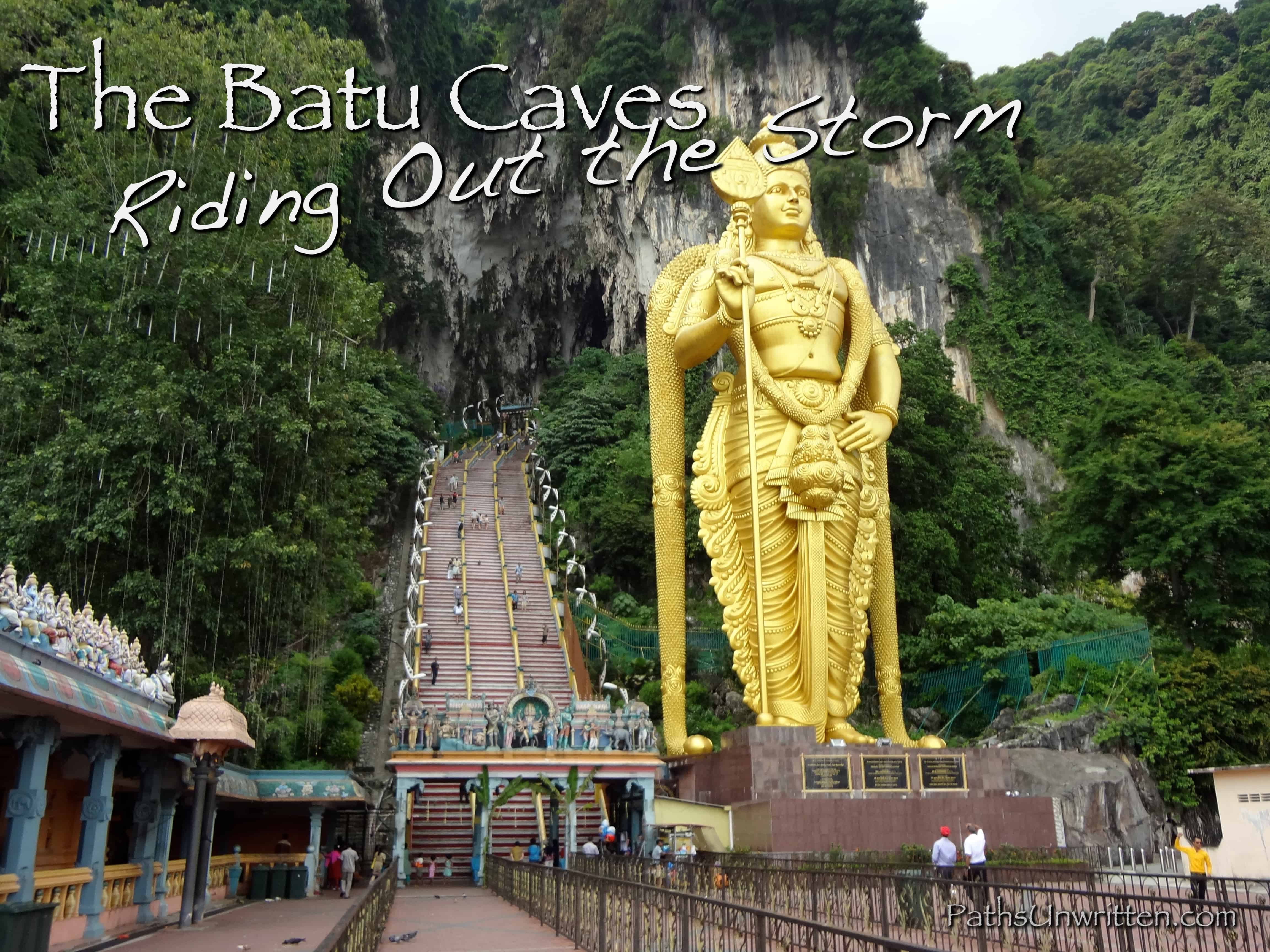View Batu in a larger map
Hinduism has fascinated me more than any other extant religion for a long time. I think this is mostly because it is the oldest major religion in the world, and along with so many variations, and no one can actually pinpoint where it came from. Having never been to a Hindu temple of any sort, and there being a large Indian population in Malaysia, I figured I’d check one out here.
On the outskirts of Kuala Lumpur is a Hindu cave temple called Batu Caves. While I wish I could have included this in the Lost Cities category, it is far too recent, dating from only the 1890’s.
Getting to the caves is a simple enough matter. Only 2 blocks from the Reggae Mansion was a large city bus stop at which bus 17, labeled with Batu Caves, begins. The ride slowly works its way out to the surrounding districts of the city, with Batu Caves near its outer terminus. The stop is easy to see, as the entire view is dominated by a giant, golden statue of Murugan, a Hindu deity that likely stems back as far as the Indus Valley civilization.
Walking toward the shrine, the first thing you will notice, besides Murugan’s stoic grin, is the colorful slope of 272 stairs dotted with monkeys. After some friends’ experiences in Lopburi, Thailand (a town notorious for its monkey gangs) I wasn’t too keen on letting these simians too close to me. A small golden Hindu shrine off to the left of the main stairway was full of people, but also surrounded by a series of bars I didn’t feel like navigating.
Interestingly, the stairs were numbered, so it was a simpler matter to know how close to the top you were. It also provided a one less worry that you could instead turn toward navigating through those menacing monkeys.
The mouth of the cave and the way its ceiling rises immediately to vast proportions make it immediately impressive. However, the scattered refuse of modernity in it quickly replaced this awe. Broken handrails, stray and unused electrical wires, and other metallic scraps dotted both the edges and random spaces of the cave.
This being my first time in a genuine Hindu temple, less the mostly ruined Lembah Bujang or Phanom Rung, I didn’t know quite what to expect. Instead of being one continuous temple construct on the inside of the cave, random shrines and decors instead dotted its entirety. And while I would like to be someday, I still am not knowledgable enough about the infinite facets of Hinduism to be able to identify most of what I was looking at.
The largest structure inside also had a multitude of people in and surrounding it. I was one of maybe 8 westerners there. The rest seemed to be of Indian ethnicities. Inside this shrine were men playing traditional instruments, and other people worshipping. I had to wonder if these people working the shrine were actually part of the Hindu temple or just working as a tourist attraction; something I had seen all too many times before.
In the far back, the cave opens to a circular aperture staring at the sky and ringed by greenery. It was here that the overcast sky shone through as a near black and thunder echoed into the cave. People were starting to leave.
I had just gotten here and I wasn’t done yet. Despite being a relatively small cave I wanted to take in its entirety. The music, the colors of the shrines, and the natural cave scenery all made for a spectacle in the dying light of the oncoming storm.
By the time I got back to the entrance of the cave, the rain had started. People were scurrying down those 272 stairs with less grace than those frantic monkeys that dot their steps. And, in the newly dampened surrounding, this lack of care made for more than a few slips and falls on the crowds’ rear ends.
I was still not in such a hurry to leave. And, I had no desire to take a massive fall down these wet steps, despite being the epitome of grace that I am. I, I instead followed a side path over to another cave entrance marked with a sign advertising the “Dark Cave”.
It was intriguing to watch the storm come in over the horizon. The view from any part of the top of the stairwell gives you a two-dimensional silhouette of the skyscrapers of Kuala Lumpur. This view was darkened and then completely blacked out by the solid cloud of gray which overcame all in view.
In the process of waiting, I was with a couple Germans and a Malay family. I tried to get into the Dark Cave, but their last tour (apparently it’s only available as a guided tour) had already finished for the day. Instead, I ended up chatting with the Germans for a little while after they saw one of the nearby monkeys steal my water bottle and started laughing. We took turns photographing each other with various scenes in the background. Unfortunately, only a handful turned out semi-presentable for me.
Within an hour, the torrents had subsided and we were all on out way back into that formerly hidden city skyline.































Great photos of Batu Caves, Ben.